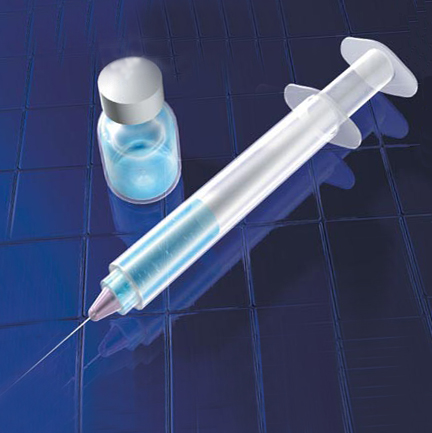Posts Tagged ‘pediatric otolaryngology’

My client, Dr. Nina Shapiro, Director of Pediatric Otolaryngology and an Associate Professor at the David Geffen School of Medicine at UCLA has her say about parents choosing or not choosing to vaccinate their kids in a recent blog. Dr. Shapiro is the author of Take A Deep Breath: Clear the Air for the Health of Your Child.
“Nut-free”, “Peanut-free”, and the latest and greatest: “Nut sensitive”. The rage in preschools and elementary schools across the country is to protect our nut-challenged children from nut exposure, even if it means not exposing them to nuts in the same building or playground, to minimize their risk of life-threatening allergic reactions. Allergic concerns have expanded beyond nuts, to gluten and dairy, to the degree that some schools now prohibit ‘powdered cheese products’, to protect children who are especially dairy sensitive. Some schools are not ‘nut-‘ or ‘dairy’-free, but are merely ‘nut’ or ‘dairy’-sensitive. I hope that this means that they take special precautions, beyond just discussing the inner feelings and emotions of those ‘sensitive’ to certain foods.
Please don’t take any of this as sarcasm. I am fully aware that food allergies are bona fide, and when they occur to the point of danger, kids can die, or nearly die, from a severe food reaction. An elementary school girl recently died of a previously undocumented allergic reaction recently, while at school. So an institution’s decision to either ban or, well, ‘sensitize’, potential food allergens, for the greater good, becomes a public health issue, even on the small scale of a school’s microcosm. This is a good thing. By not sending your child to school with their favorite PBJ or cheese puff, you are protecting others. Not necessarily your nut-insensitive child, who happily gobbles powdery cheese products and peanut butter cups in the comfort of your BPA-free hybrid vehicle, but others. Your child’s sacrifice for the greater good is worth it; seeing a small friend go into anaphylactic shock can scar a tyke for life, not to mention the allergic child himself. And this protection of others is important. Equally important is teachers knowing and being re-certified in CPR (which, by the way, might have saved that elementary school girl, had it been initiated before paramedics arrived). Maybe even as important as getting immunized.
Is there a lunch table for the vaccine-sensitive? We promise not to serve nuts. I just wonder if schools would consider instituting ‘vaccine-free’ zones. You know, for the greater good? Just as we are protective of the nut-challenged from life-threatening reactions, what about protecting children from life-threatening illnesses? Public schools can mandate that all must be immunized, but do allow for exemptions, which are pretty easy to get. Many public schools report immunization rates of less than 50% of their students. Private and parochial schools can strongly encourage immunizations, but they cannot mandate that all must be immunized. Some private schools have immunization rates of less than 20%. Yes, that’s right a parent might pay $25,000 a year to a school where less than one in five of their classmates are immunized against life-threatening illnesses such as measles, polio, bacteria which cause meningitis, or pertussis (the one that causes whooping cough). In order for a school to be considered truly immunized, from a public health (or ‘greater good’) standpoint, that particular school’s immunization rate needs to be 90% or higher. Parents have varied reasons, primarily personal, why they choose not to immunize their children. Some parents are concerned about autism risk, even though all of the studies connecting the rise in autism with immunizations have been debunked. Some are concerned that their child’s body is too small to tolerate a large dose of so many vaccines at once, so they spread out the schedule recommended by the American Academy of Pediatrics (AAP) and the Centers for Disease Control (CDC) to create their own ‘tailor-made’ schedule. Some parents think that the illnesses kids are getting immunized against don’t exist anymore, so why bother getting immunized, since illnesses such as polio, measles, mumps, and tetanus have been eradicated anyway.
But here’s the reality: these diseases do exist, and we’re going to see more of them come back. I read about pertussis, the bacterium that causes whooping cough, when I was in medical school. We would learn about this horrible respiratory disease and how it afflicted and took the lives of so many of those poor shlubs from the 1930’s, who hadn’t figure out prevention yet. We would read about them as if they were some primitive Neanderthal tribe, barely able to put two sticks together to make fire. Occasionally a crusty old professor would tell tales of the ‘days of whooping cough’. Ho hum. Well, it’s back. Not so ho-hum anymore. The hundred-day cough, which became an outbreak in California and other states, resulted in many children dying. During the tail end of medical school, I saw H. flu infections, a bacterium that caused severe respiratory illnesses, meningitis, eye infections, and blocked breathing. The miracle of the vaccine for H. flu, which became widely used in 1999, nearly wiped it out. Until now. It’s back, too. Dr. Jonas Salk, the co-creator of the polio vaccine, spoke at my medical school graduation. Polio killed millions, and paralyzed millions more. Thank you, Jonas Salk, and your sidekick Albert Sabin. We haven’t seen polio outbreaks in the U.S. since the 1950’s, when Salk and Sabin’s vaccine began being given widely. Well, we haven’t seen outbreaks yet. We might have to wait until the immunization rates drop some more. But let’s hope not. Polio, whooping cough, meningitis, and measles, to name a few, are still out there – and they could once again be coming to a school near you.

My client, Nina L. Shapiro, MD, FACS, FAAP Director, Pediatric Otolaryngology and Associate Professor of Surgery at the UCLA School of Medicine shares insights on how to avoid a painful summer in her feature article in Westside Today.
Dr. Shapiro is the author of Take a Deep Breath: Clear The Air For The Health Of Your Child (World Scientific, January 2012)
Here are her suggestions to avoid ‘swimmer’s ear.”
The joys of swimming, toned moms, and tired tykes. But, like with most things in life there is also a downside to this stellar summer exercise: swimmer’s ear. A seasonal nuisance for both children and adults “otitis externa,” or “outer ear infection” as it technically referred to, is oftentimes painful. But, there are some precautions that can be taken to minimize ones’ chances of suffering an earful of hurt.
Swimmer’s Ear is caused by swelling and irritation of the skin of the ear canal. What causes this skin to go bad? The bacteria, or fungus, growing rapidly thanks to the warmth, water and humidity of watery settings. When water gets trapped in the ear canal, bacteria that usually exist quietly in the skin begin to grow, as these organisms are nurtured by these moist environs, resulting in their multiplying, thus causing swelling and pain. Other common symptoms include itchiness; wet, sticky drainage from the ear; pain when touching the ear; and occasionally fever, hearing loss, or facial swelling and redness. Once these microbial critters are entrenched, the infection can spread to the rest of the outer ear and face, so treatment, an antibiotic or antifungal eardrop, prescribed by your doctor, is a necessity. It’s also best to stay out of the water until the infection clears.
So how can you and your family avoid going down this moisture-fed rabbit hole? Here are some tips.
1. When you get out of the water, get the water out.
When you or your tyke exits the pool, gently dry the outside of the ear with a towel. If your child hasn’t had any ear surgery, including ear tubes, it’s safe to use an over-the-counter alcohol-based eardrop, which helps absorb ear canal moisture after swimming. If it still feels like water is trapped, set a hair dryer on a low, warm setting, and gently dry the ear, holding the hair dryer at least six inches from the skin.
2. Water, water go away – you won’t be in my canal today.
If you or your kids like to wear earplugs, then make sure that they are properly fitted so that they can help cut out or down on water entry into the canal in the first place.
3. Key Tip: No Q-Tip
DO NOT use cotton-tipped applicators. These are actually the second most common culprits of “swimmer’s ear,” after swimming itself. While it feels like these implements “clean” the ear of wax, water, and debris, they actually strip the delicate ear canal skin of its protective lining, thus enabling the aforementioned critters to take hold. If you must ‘clean’ your kids ears, use the corner of a washcloth to rub away what you can see. When using a cotton-tipped applicator, you remove only a little bit of wax, and push the rest into the deeper part of the ear canal, which inevitably leads to a big pain in the…ear.
Remember what your mother, grandmother and great-grandmother said when grooming ears: “Nothing smaller than your elbow in your ear!”

My client, Dr. Nina Shapiro, Director of Pediatric Otolaryngology and Associate Professor at the David Geffen School of Medicine at UCLA and author of Take a Deep Breath: Clear The Air For The Health Of Your Child appeared on The Early Show this morning to talk about children and breathing. Wondering what’s normal and what is not? Check out this segment.

Dr. Nina Shapiro, the Director of Pediatric Otolaryngology and Associate Professor at the David Geffen School of Medicine at UCLA, is the author of Take a Deep Breath: Clear The Air For The Health Of Your Child . She lends her expert addice in the december issue of Staten Island Parent. Take a look at pages 66/67 and find out if your child is breathing right.






